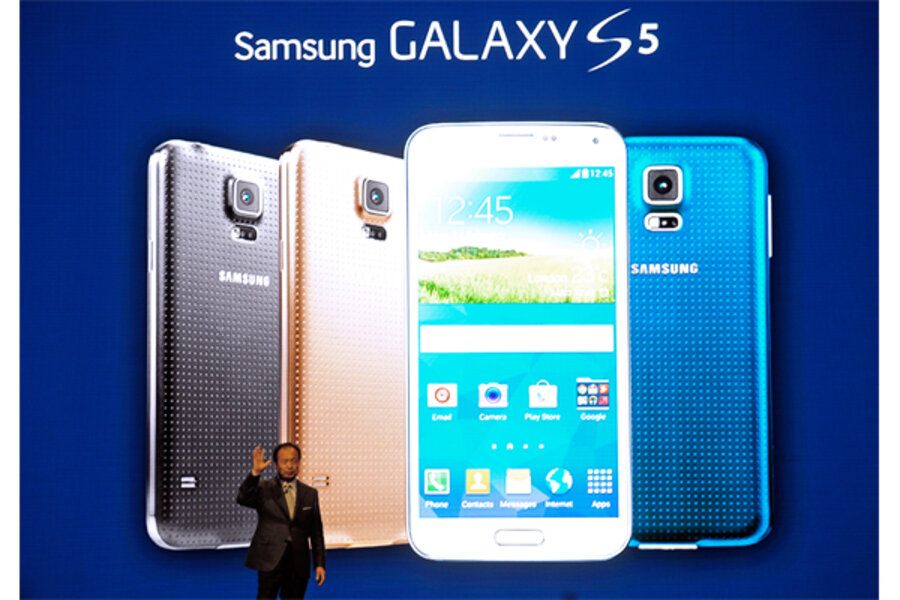Samsung Galaxy S5: Betting on basics
Loading...
Samsung’s Galaxy S5, which was unveiled Monday at the Mobile World Congress in Barcelona, doesn’t offer a never-before-seen gizmo or disruptive technology. Instead, Samsung is banking on something a bit boring to create buzz: reliability.
While the iPhone 5S motivated long lines outside Apple stores through a fingerprint sensor, top-of-the-line camera, and ritzy colors, the Samsung Galaxy S5 has revamped its main components, offering a significantly upgraded version of its already immensely popular Android-based Galaxy smart phone. Will its bet on basic but better quality pay off?
The S5’s improvements make the phone more reliable in daily use by eliminating little smart phone annoyances. The new model is water-resistant (you won’t have to get a replacement if caught in the rain, but don’t jump in a pool with it) and dust proof. It has a 16-megapixel camera sensor and can shoot 4K (ultra HD) video, features more frequently seen on high-end cameras. It has an improved battery life, which boasts 21 hours of “talk time” without a recharge, plus the ability to stay on at less than 10 percent battery for 24 hours (if on standby). It offers fingerprint-sensor technology for security, plus you can connect your fingerprint to a digital wallet so you can pay for online shopping with the swipe of your fingertip.
Samsung also claims the device can connect to more LTE networks than any other device in the world, and combines Wi-Fi and 4G to offer faster download speeds than ever before.
The device includes a heart monitor for the first time, which signals Samsung’s interest in developing workout accessories, likely due to the popularity of smart fitness bands, such as the Fitbit Force. On Monday, Samsung also released the Gear Fit, a fitness-tracking wristband that can connect to Samsung devices, and trotted out two new smart watches: the Gear 2 and Gear 2 Neo.
Other than that, the device’s features are just slightly improved from its predecessor, the Galaxy S4. It has a 5.1-inch, HD screen, and runs on a 2.5 GHz quad-core Qualcomm Snapdragon 800 processor. It now comes in four colors, including blue and gold, with a textured, perforated back cover.
Looking at the previous success of the Galaxy S4, fine-tuning previous technology may be a smart strategy. The Galaxy S4 broke sales records its first month on sale last June, and remained in the top three most popular devices across all carriers, even as the iPhone 5S and 5C release knocked off formerly strong competitors such as HTC and Motorola from the top spots.
Samsung’s gamble will be decided when the device goes on sale in early April. No word on price yet, though Samsung executives have said previously that they’d like to keep pricing competitive.








